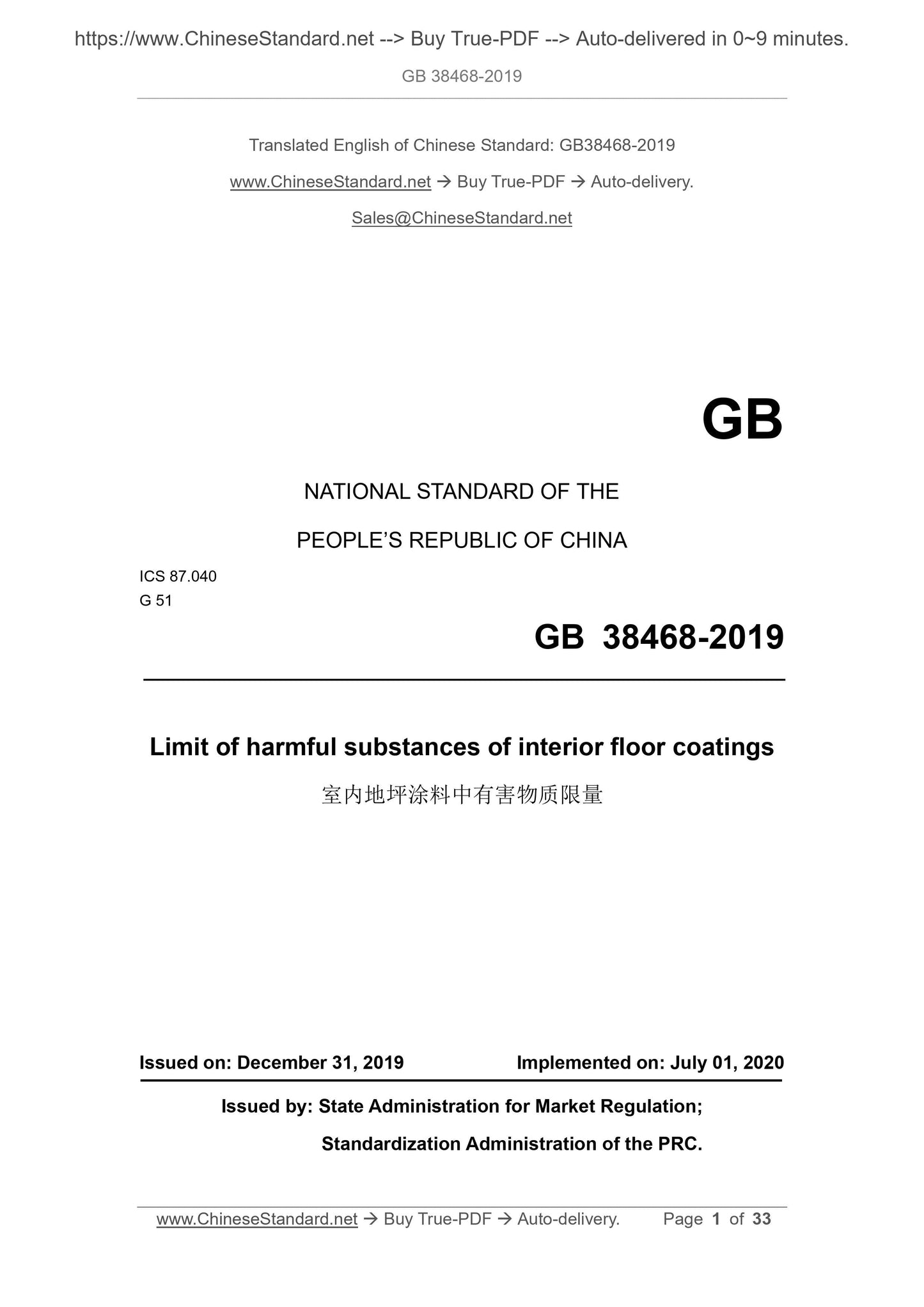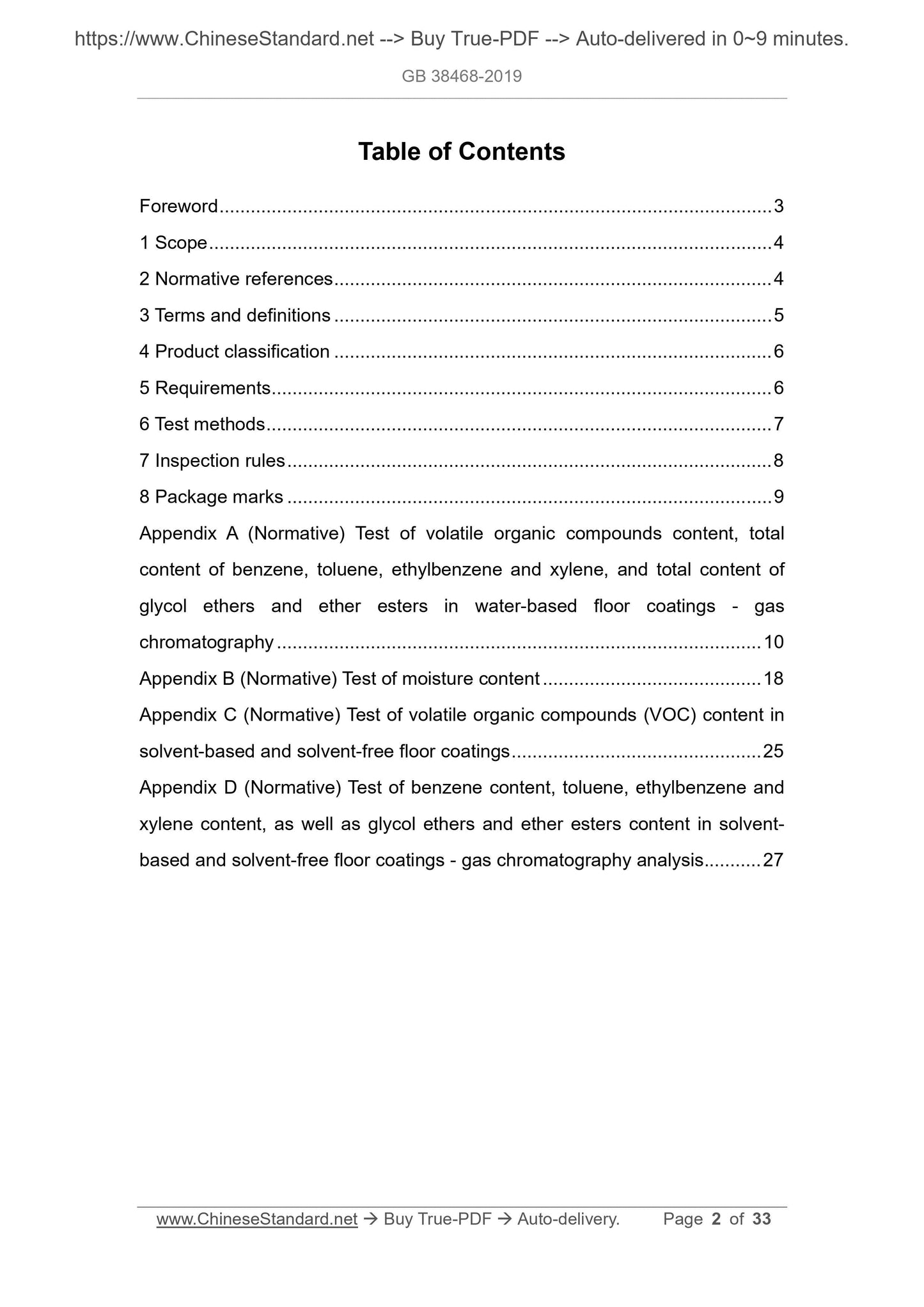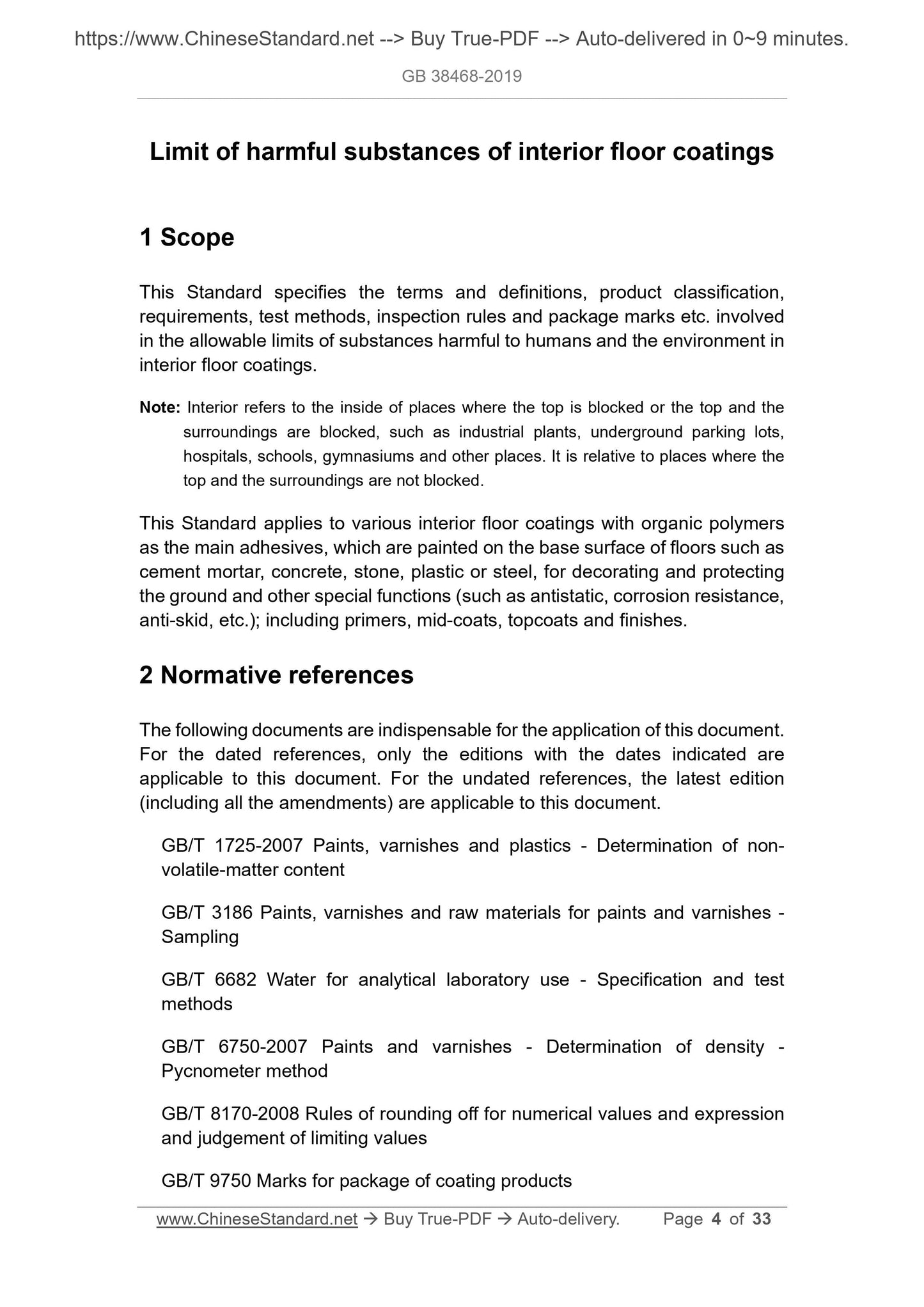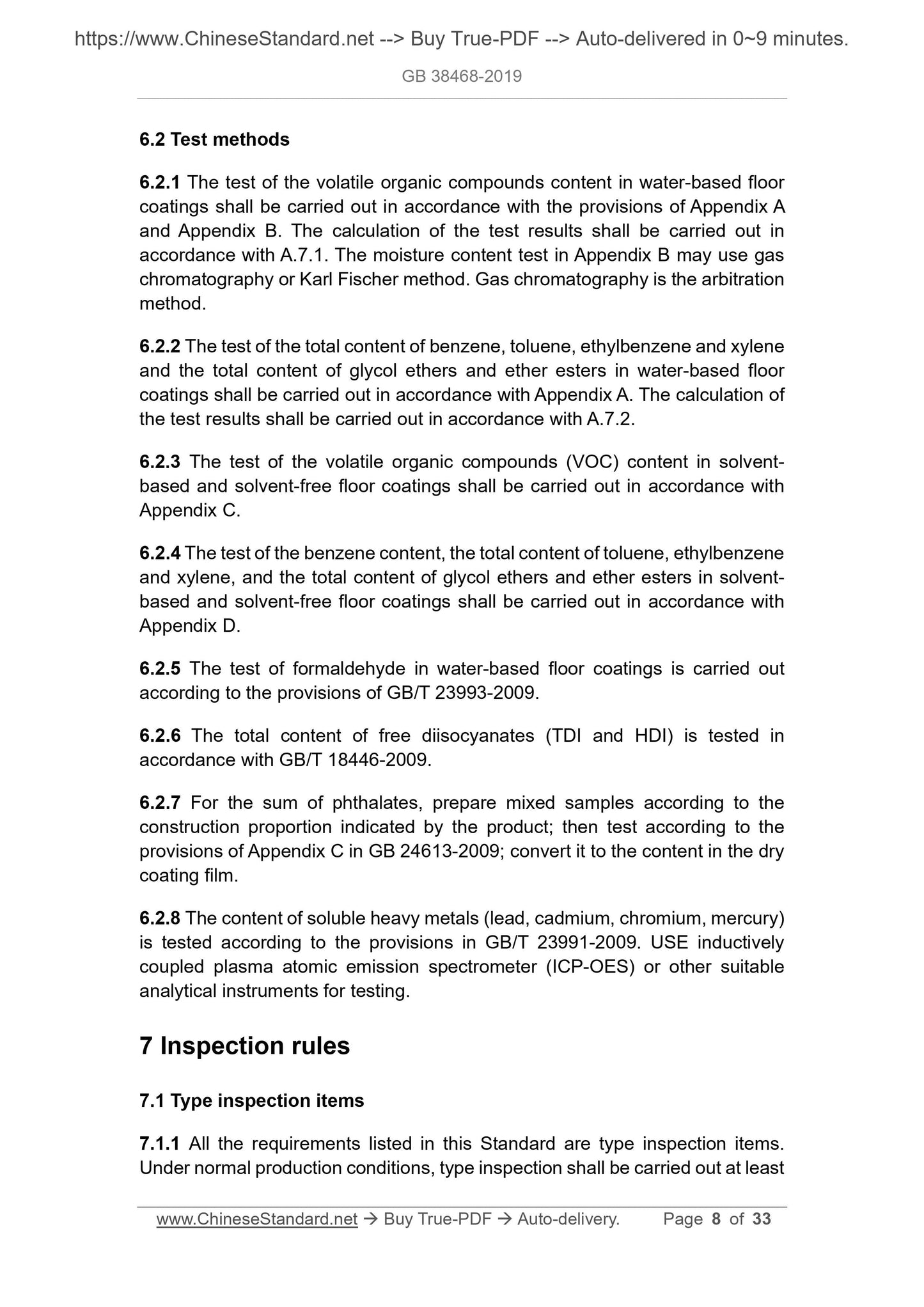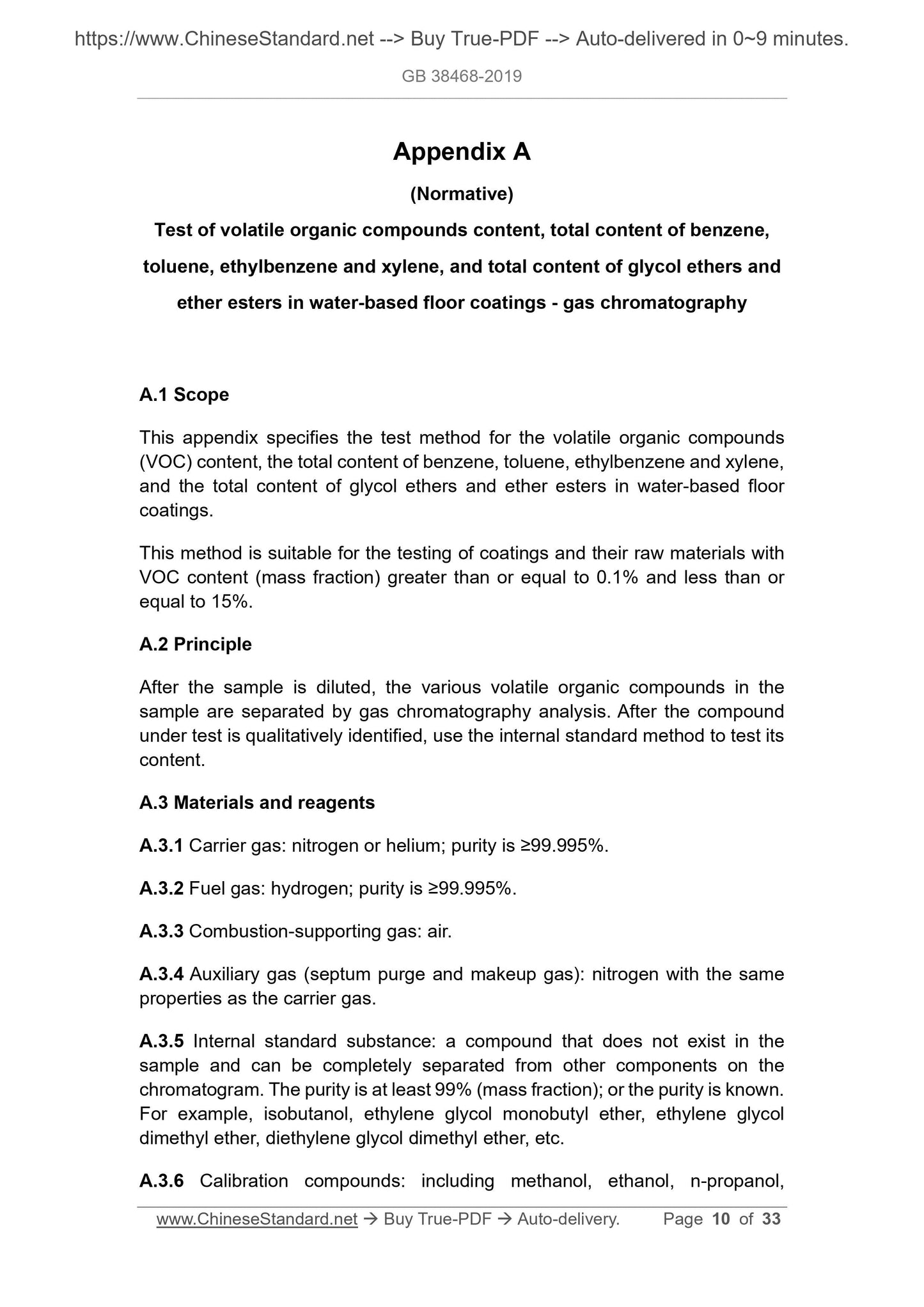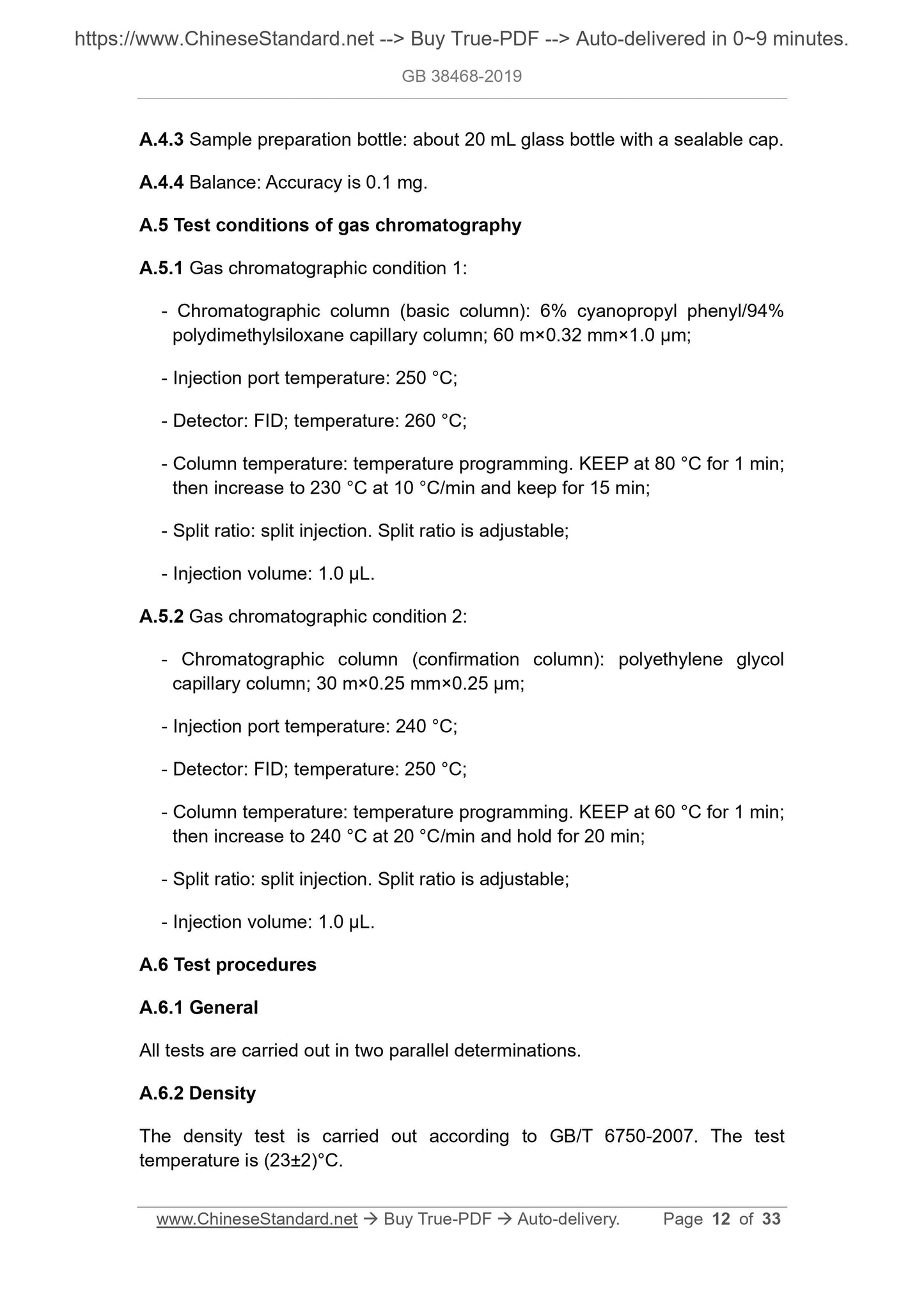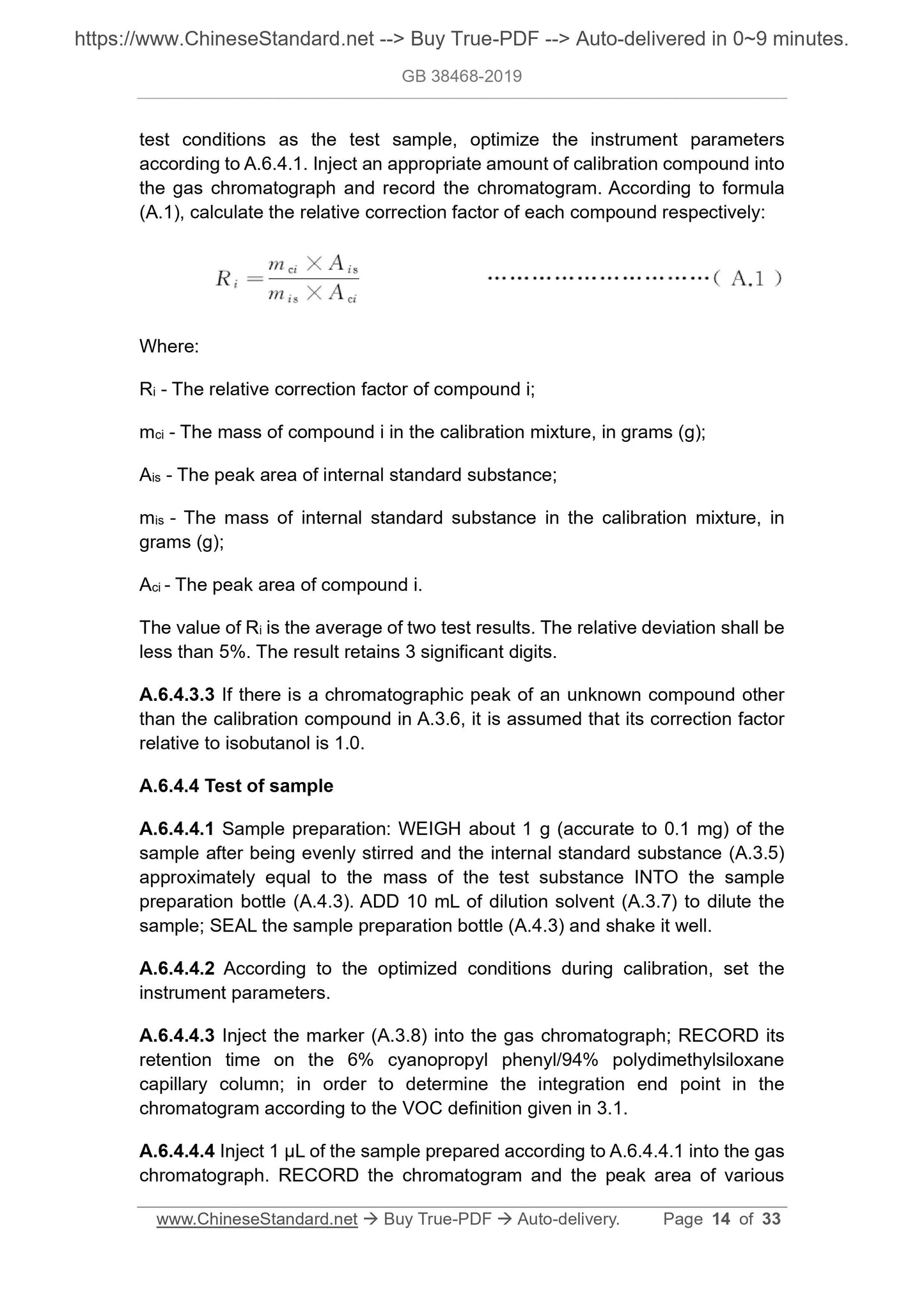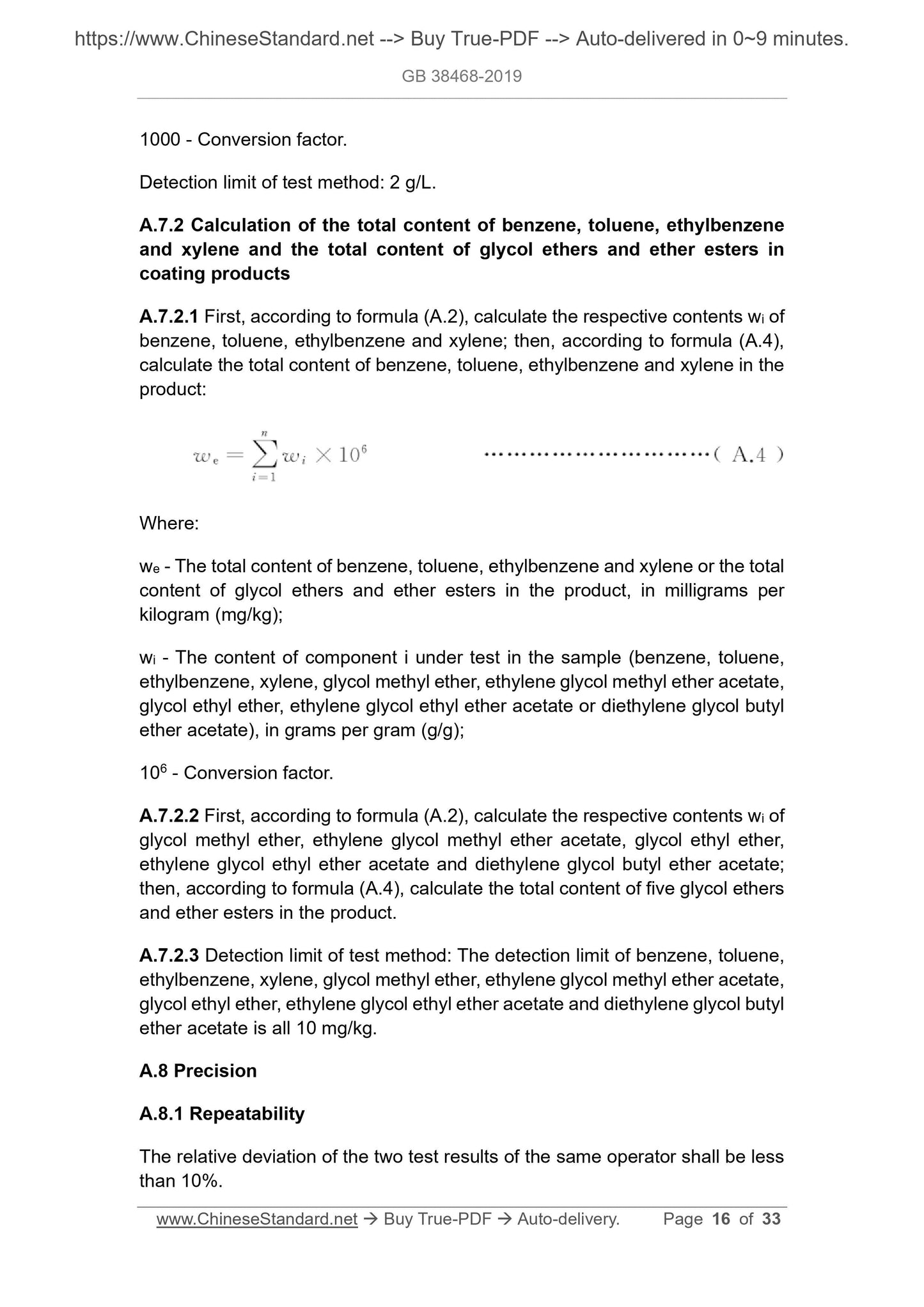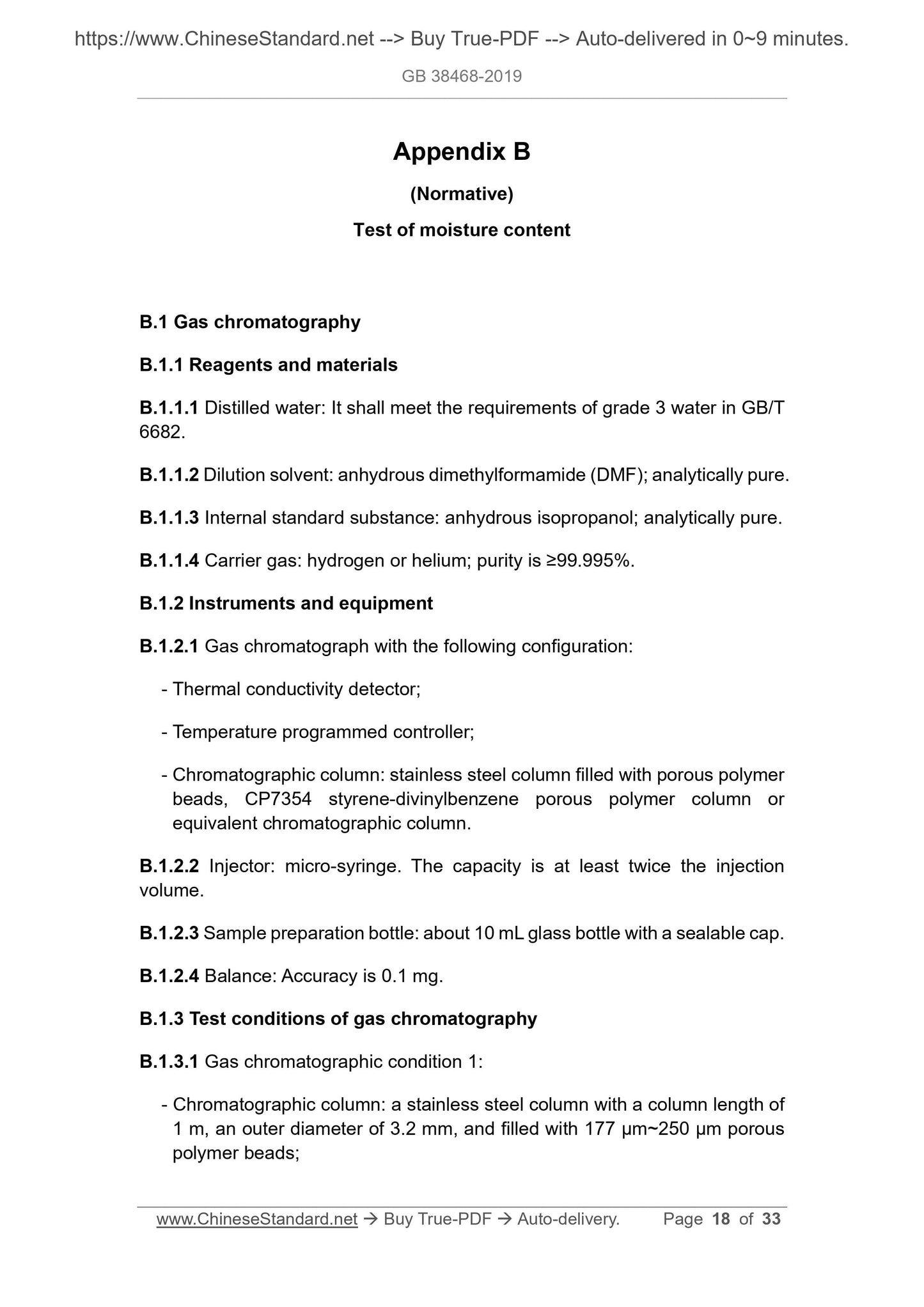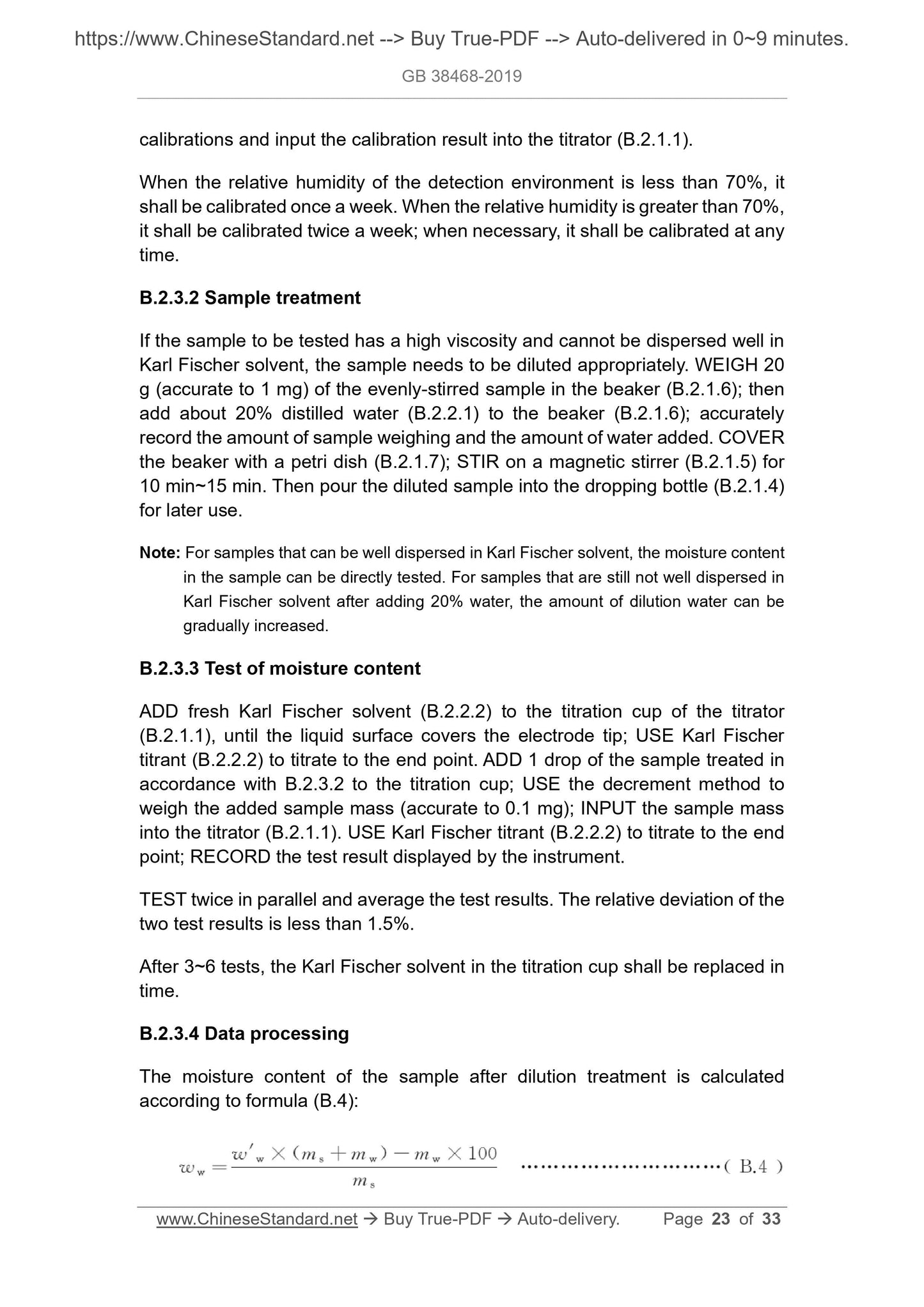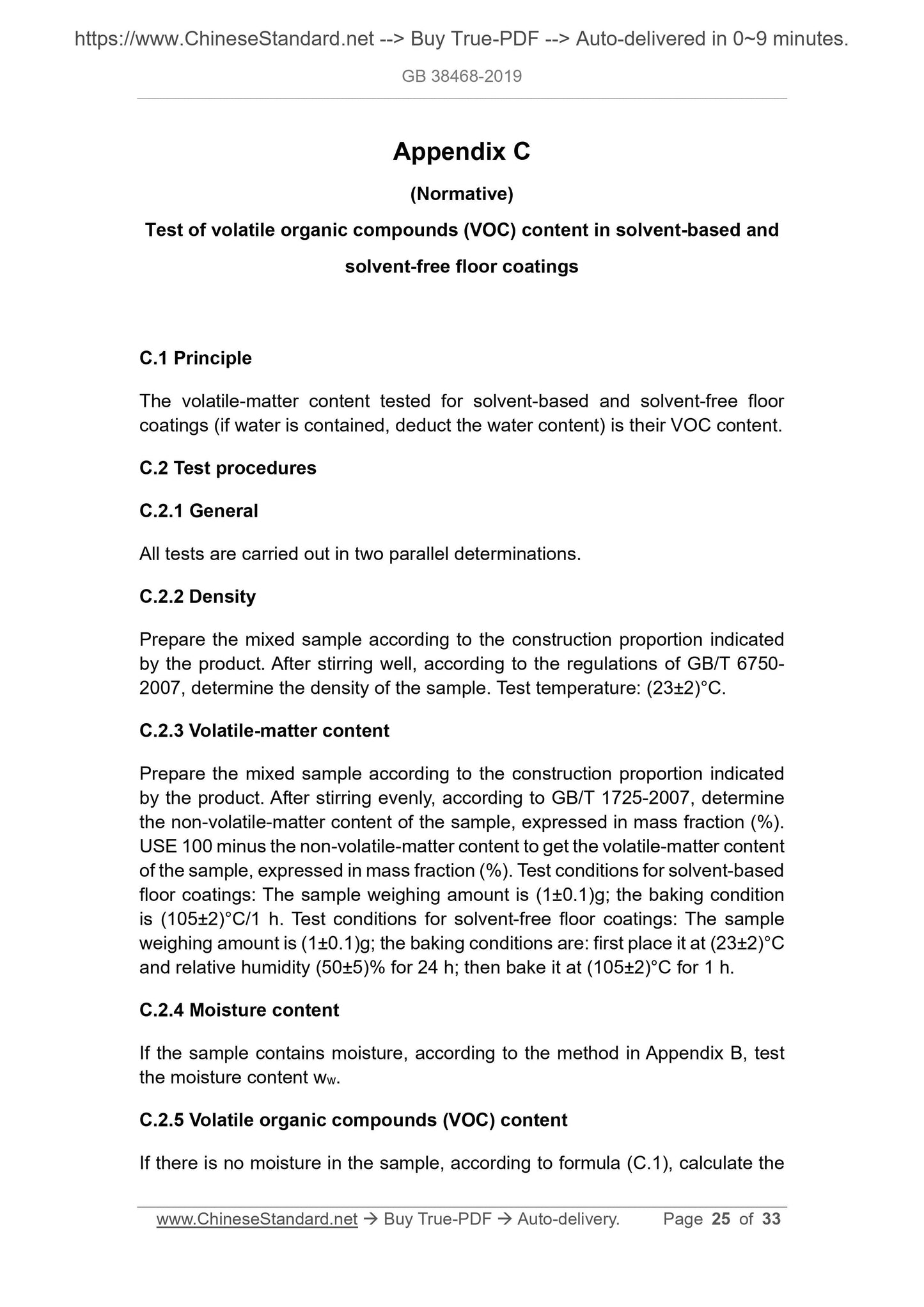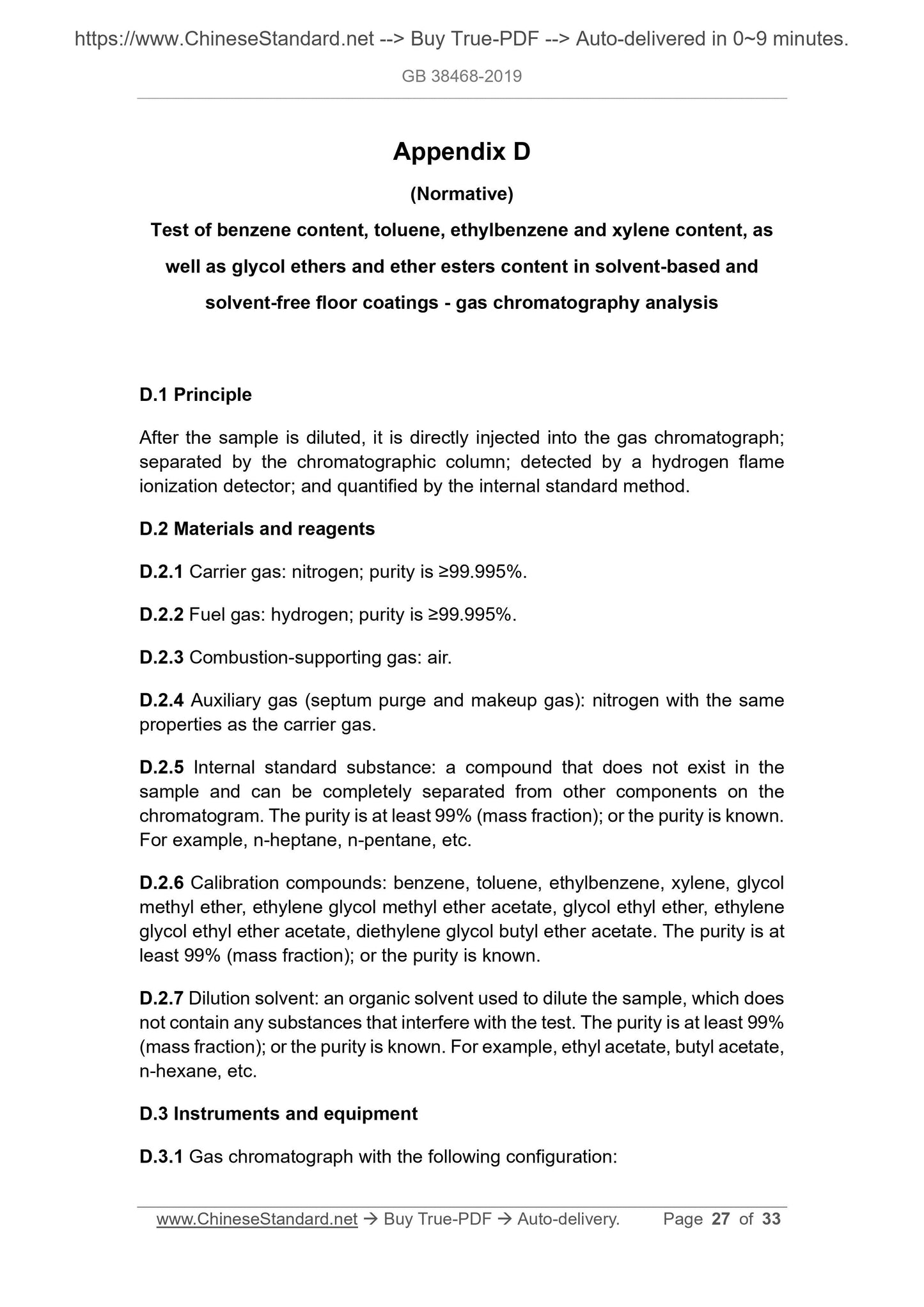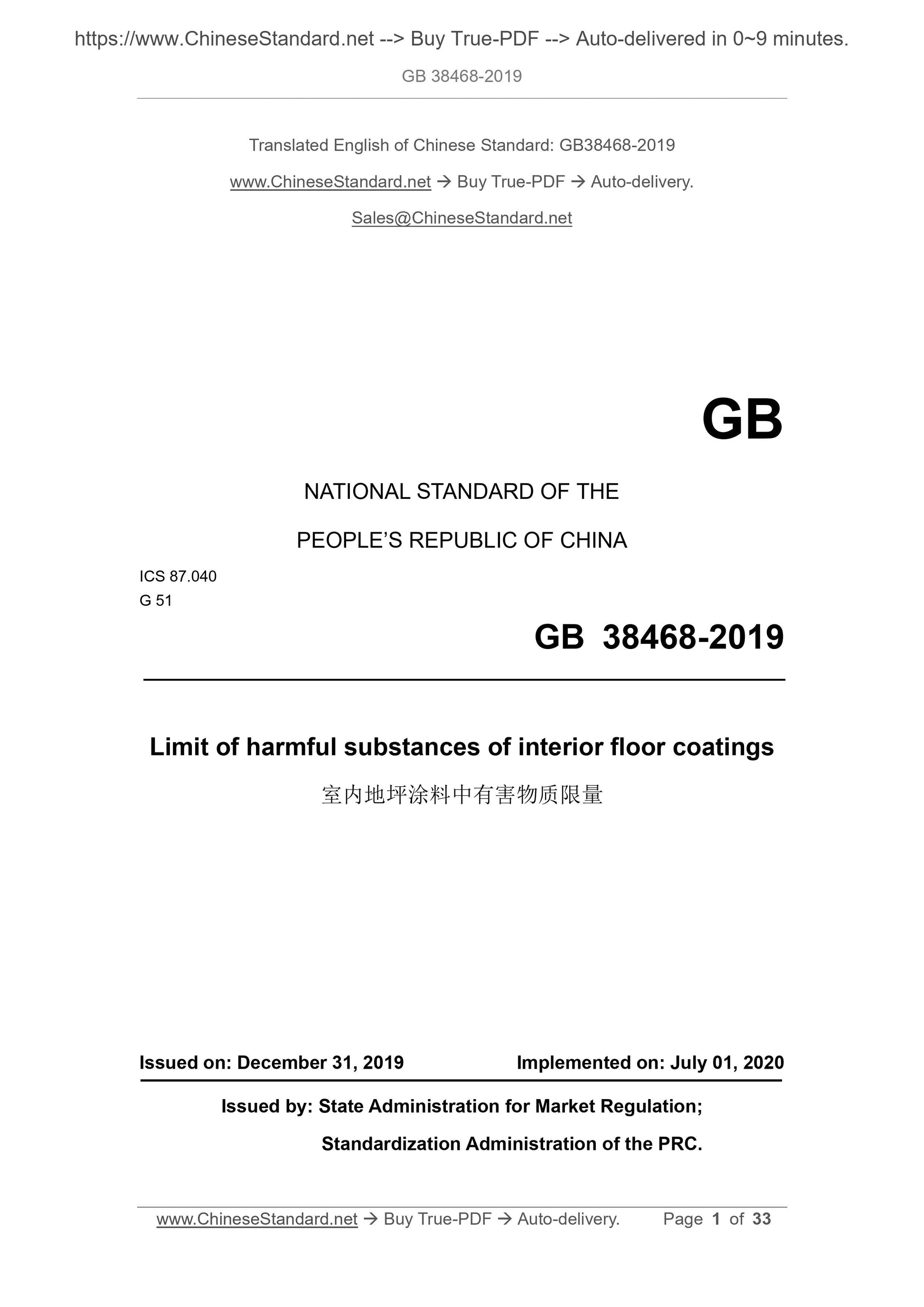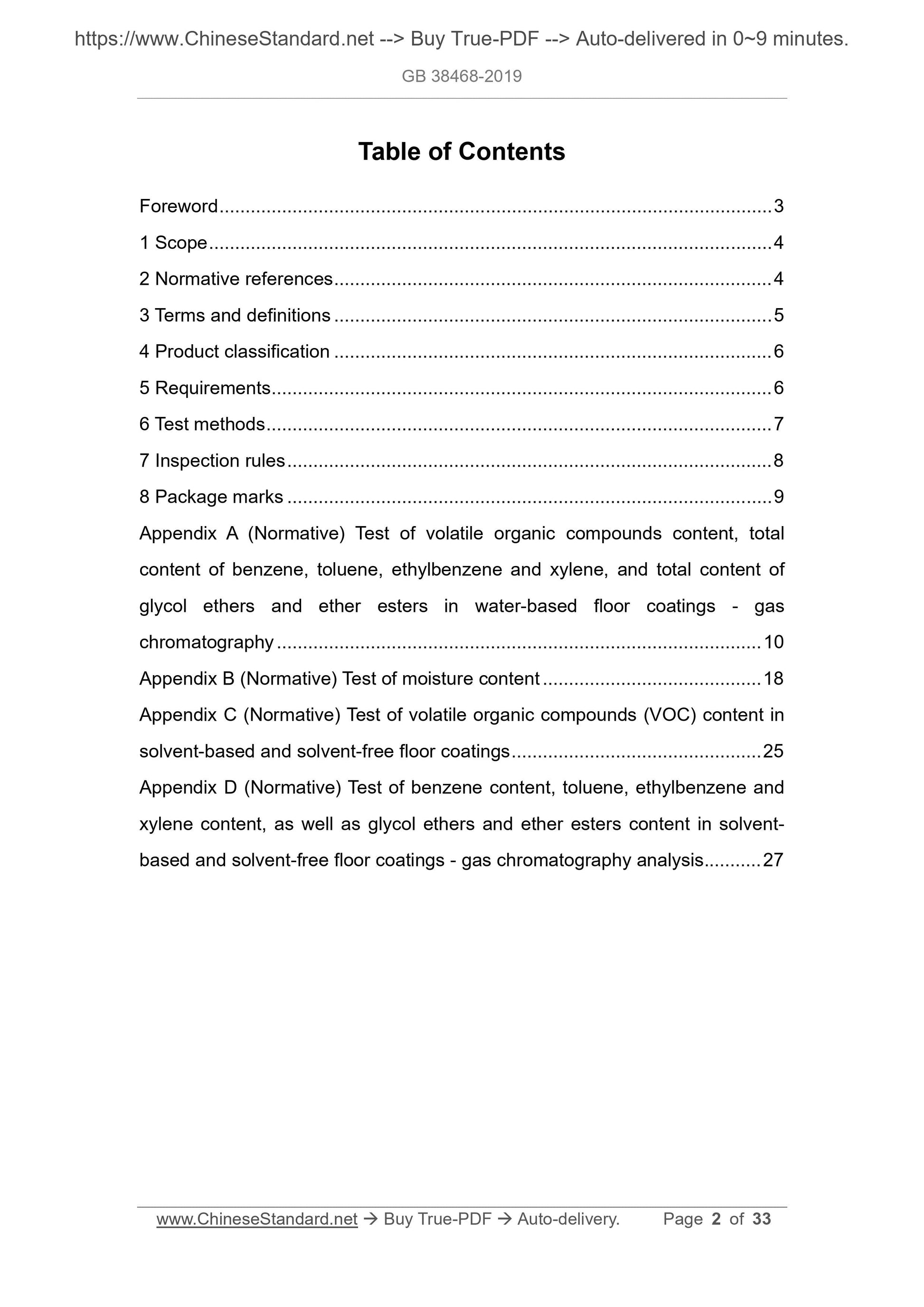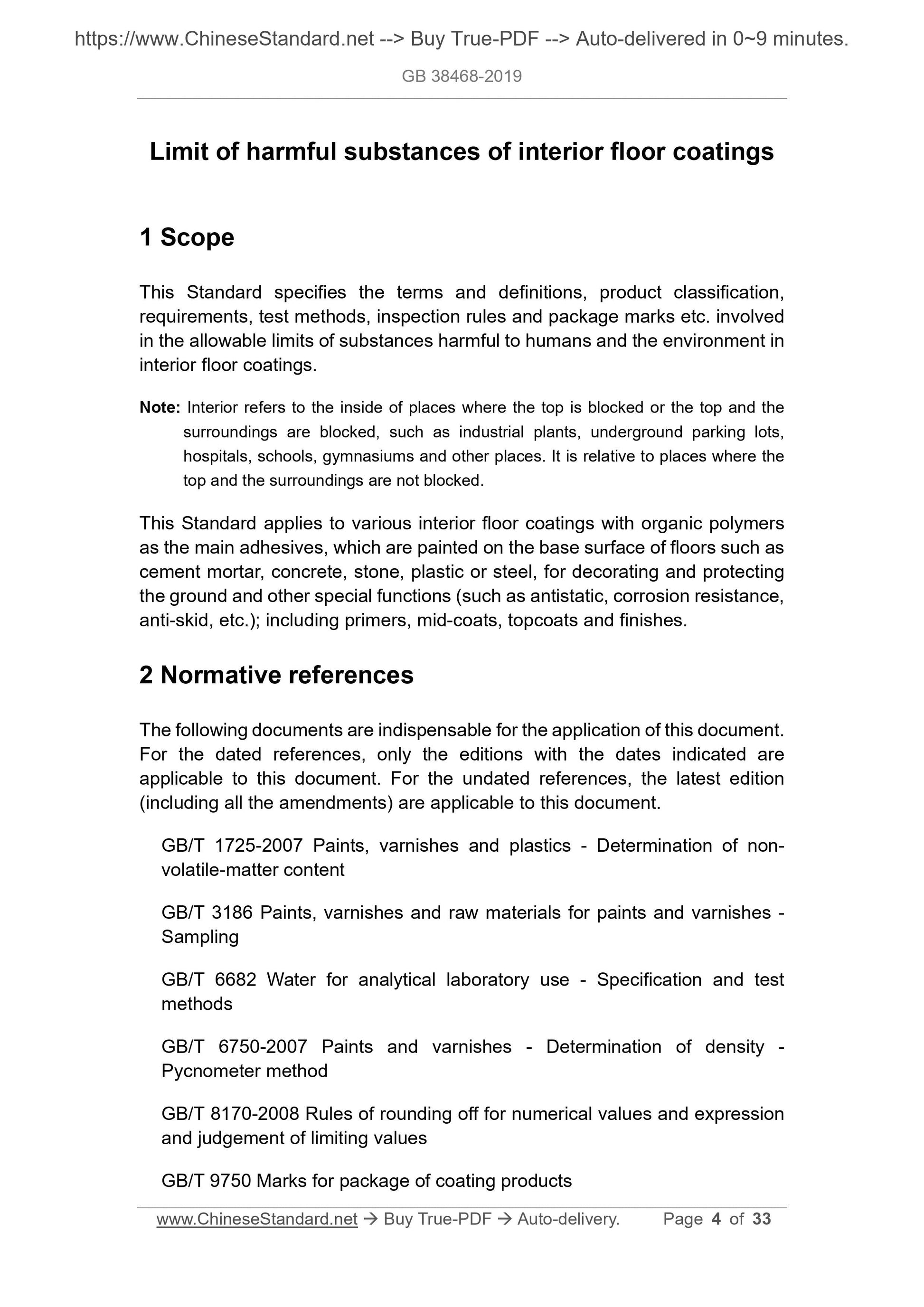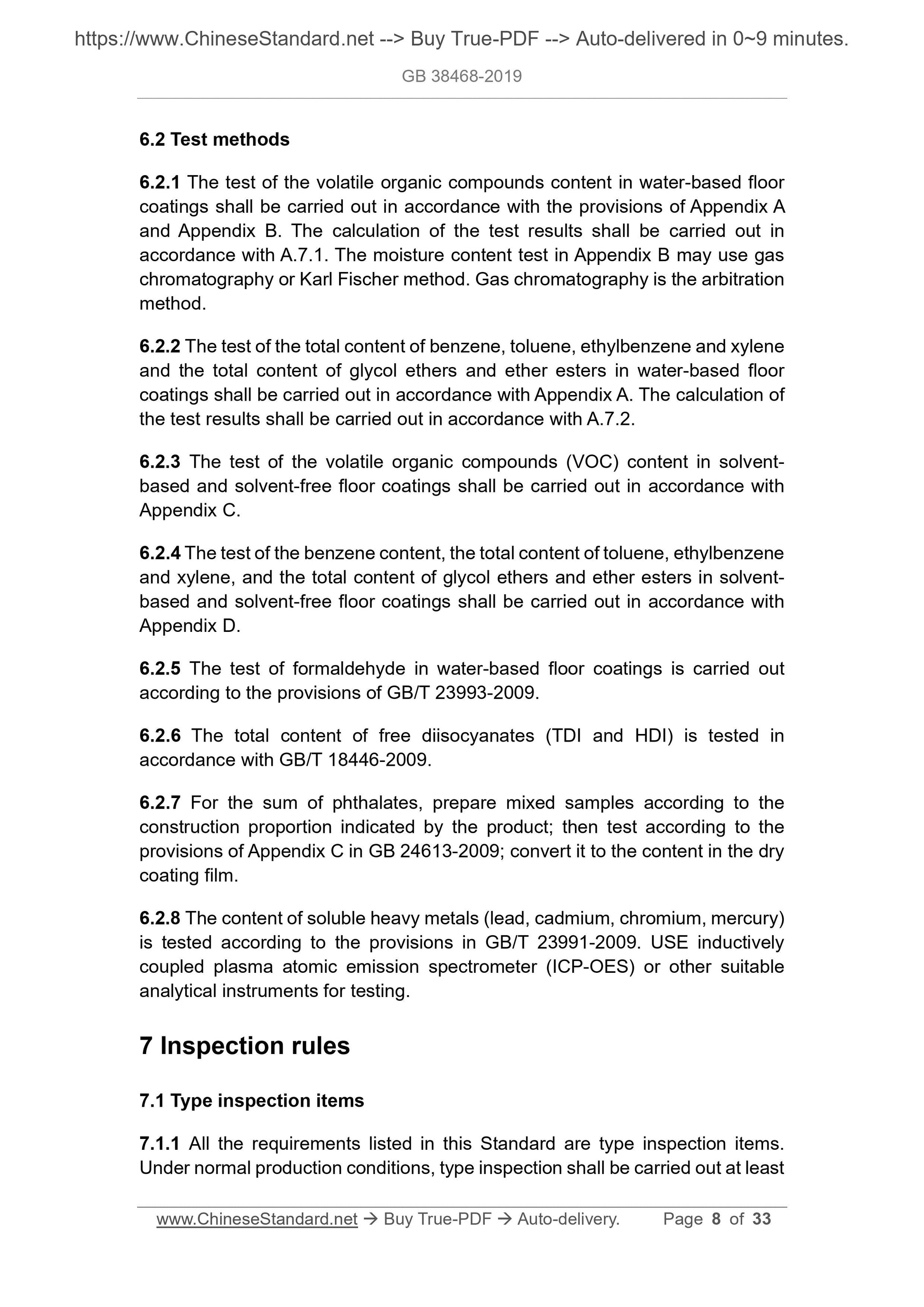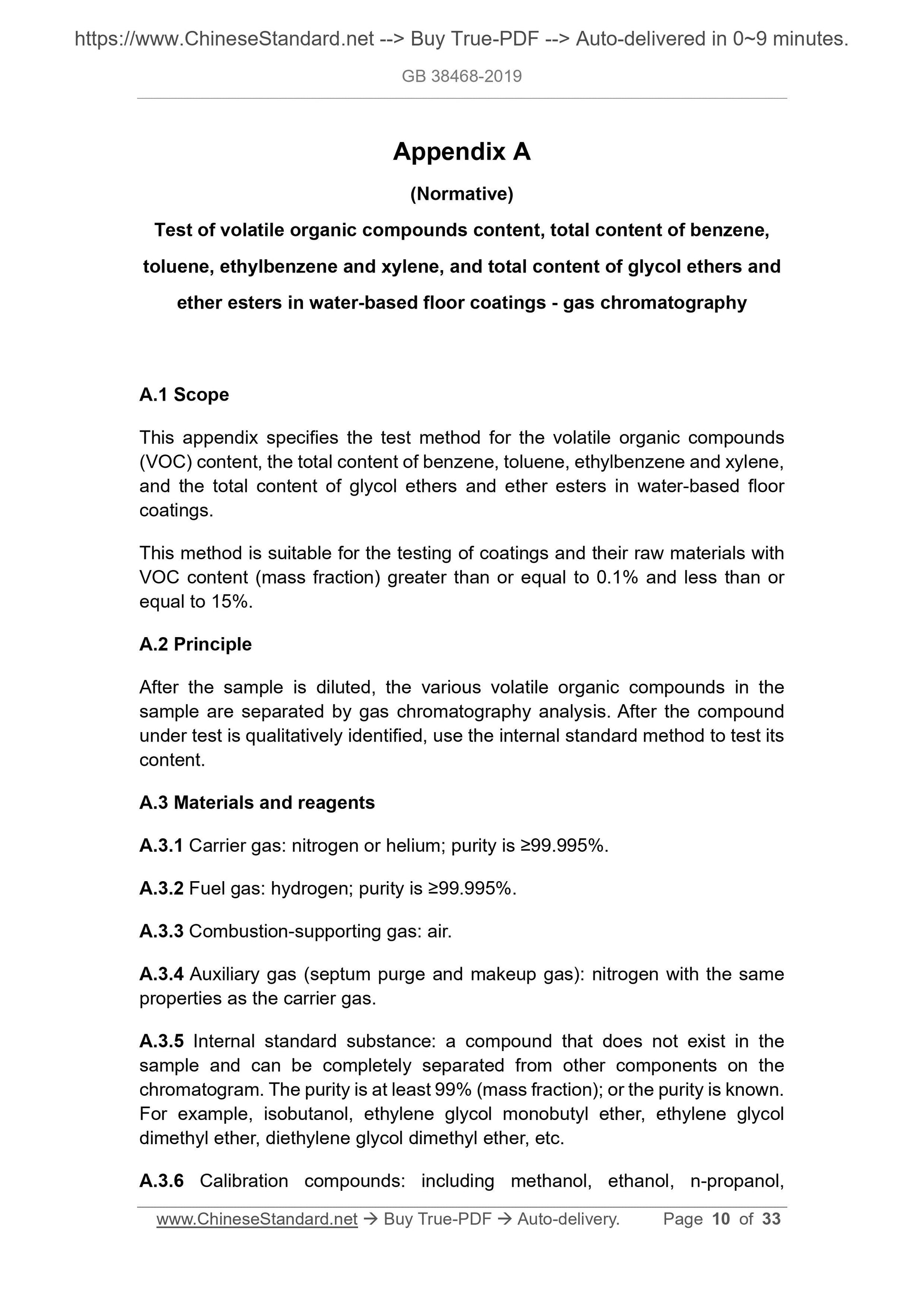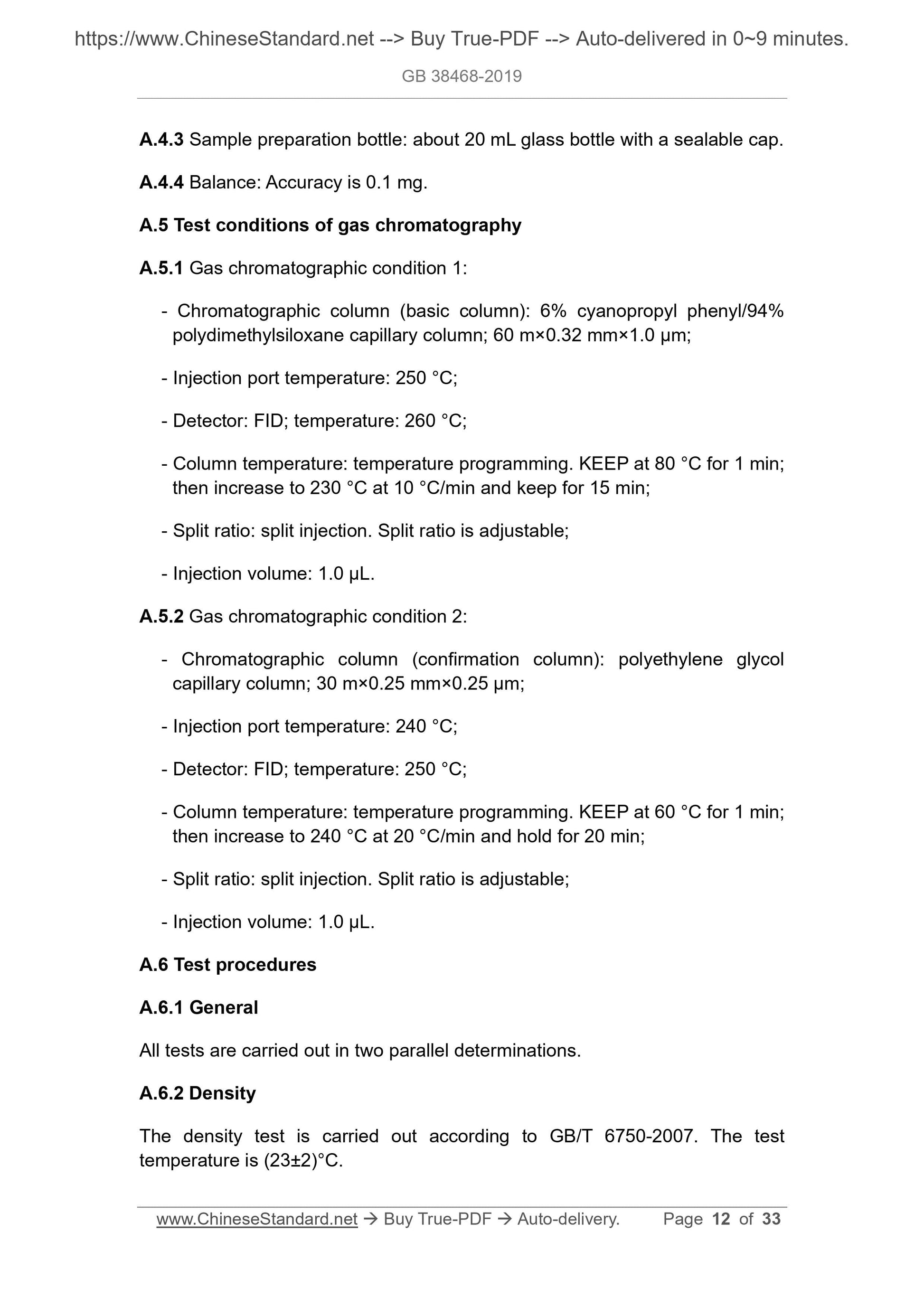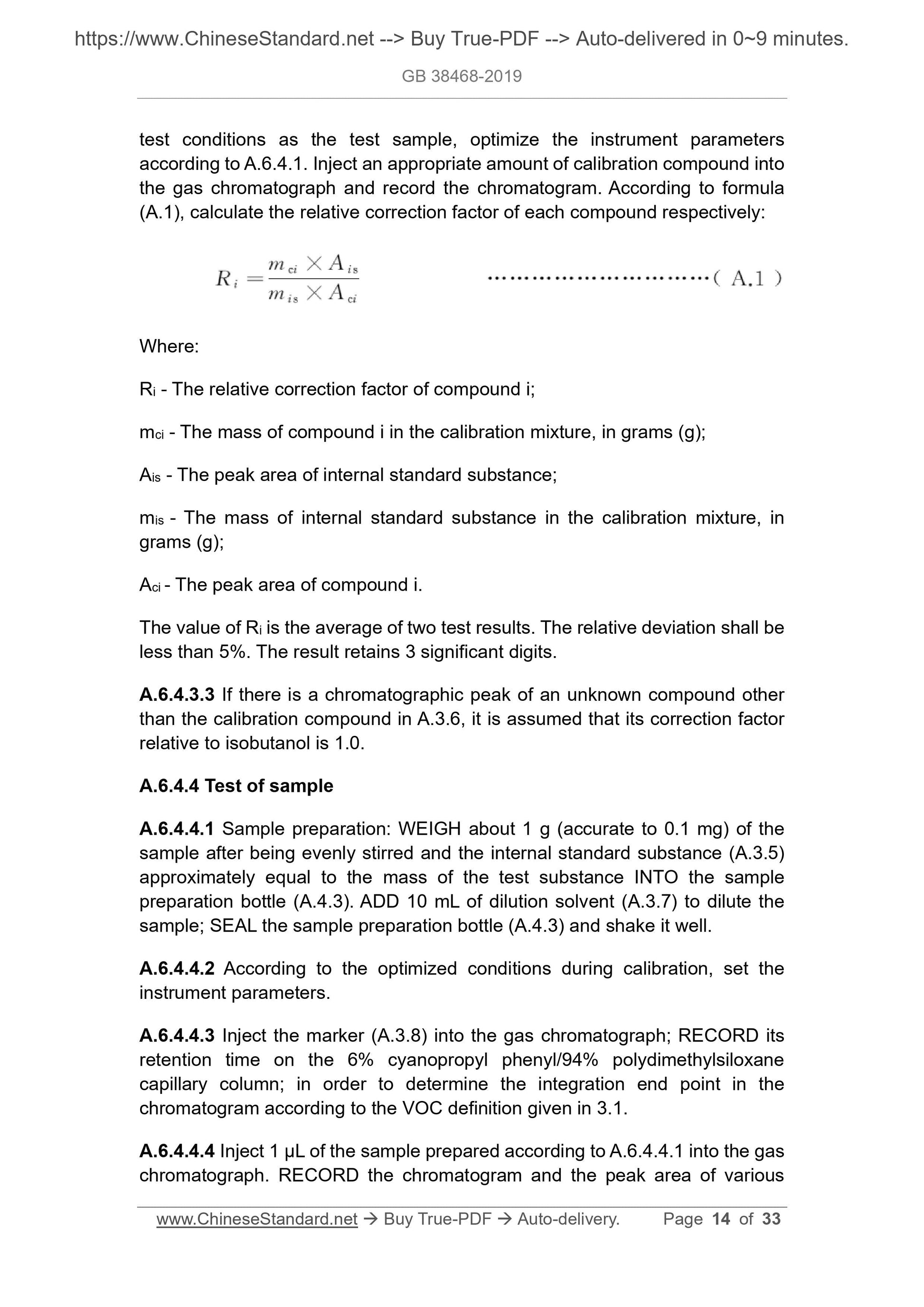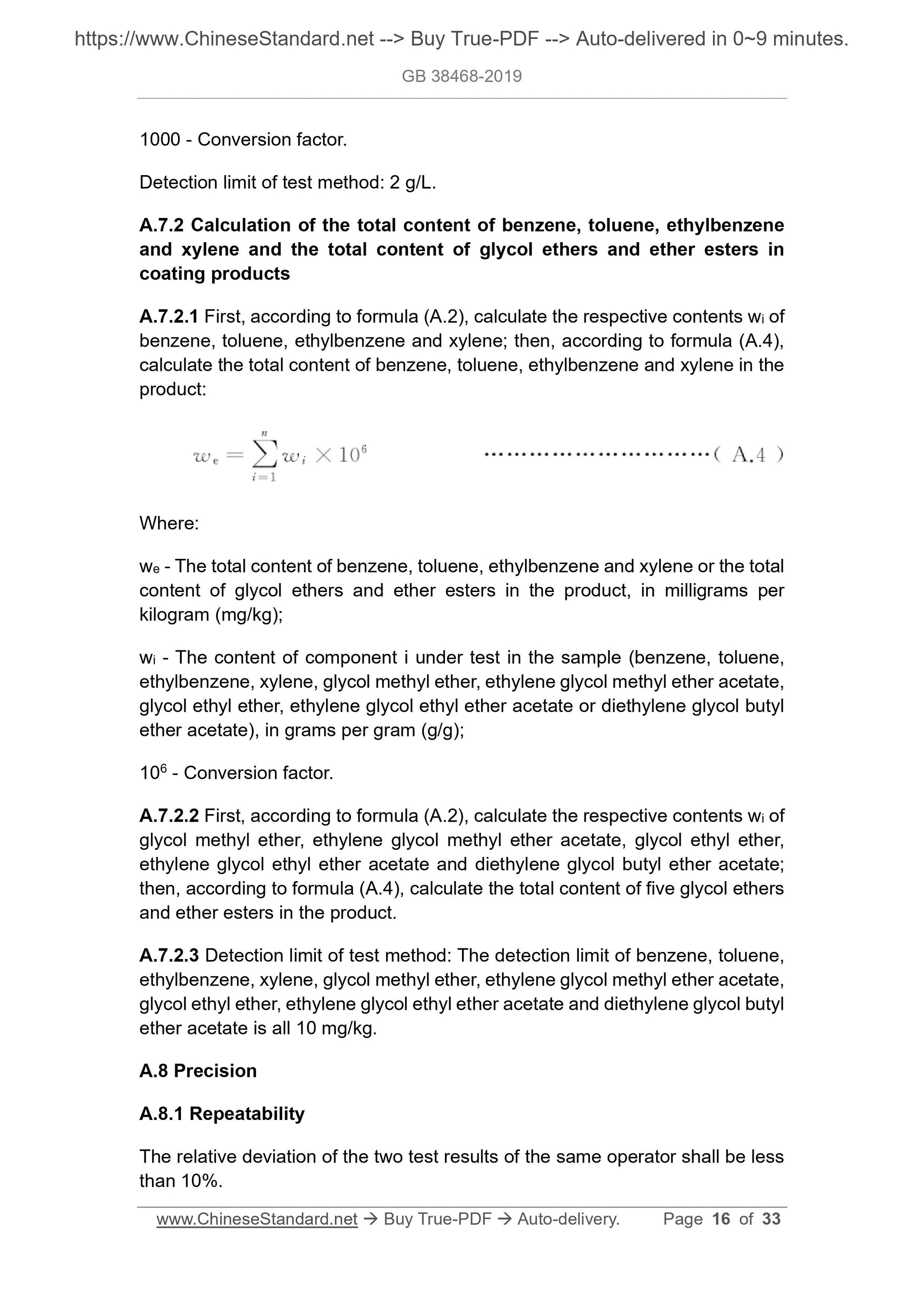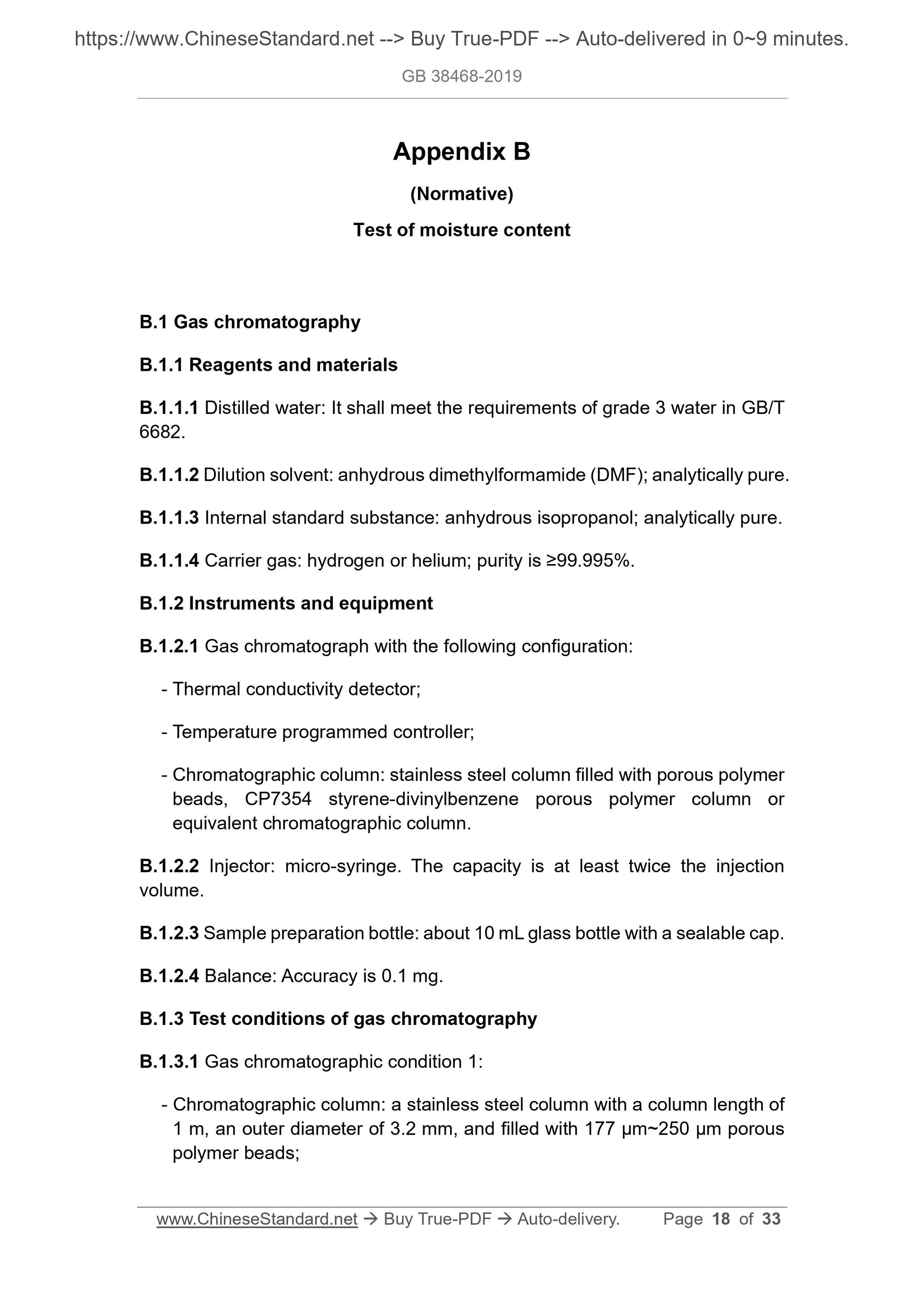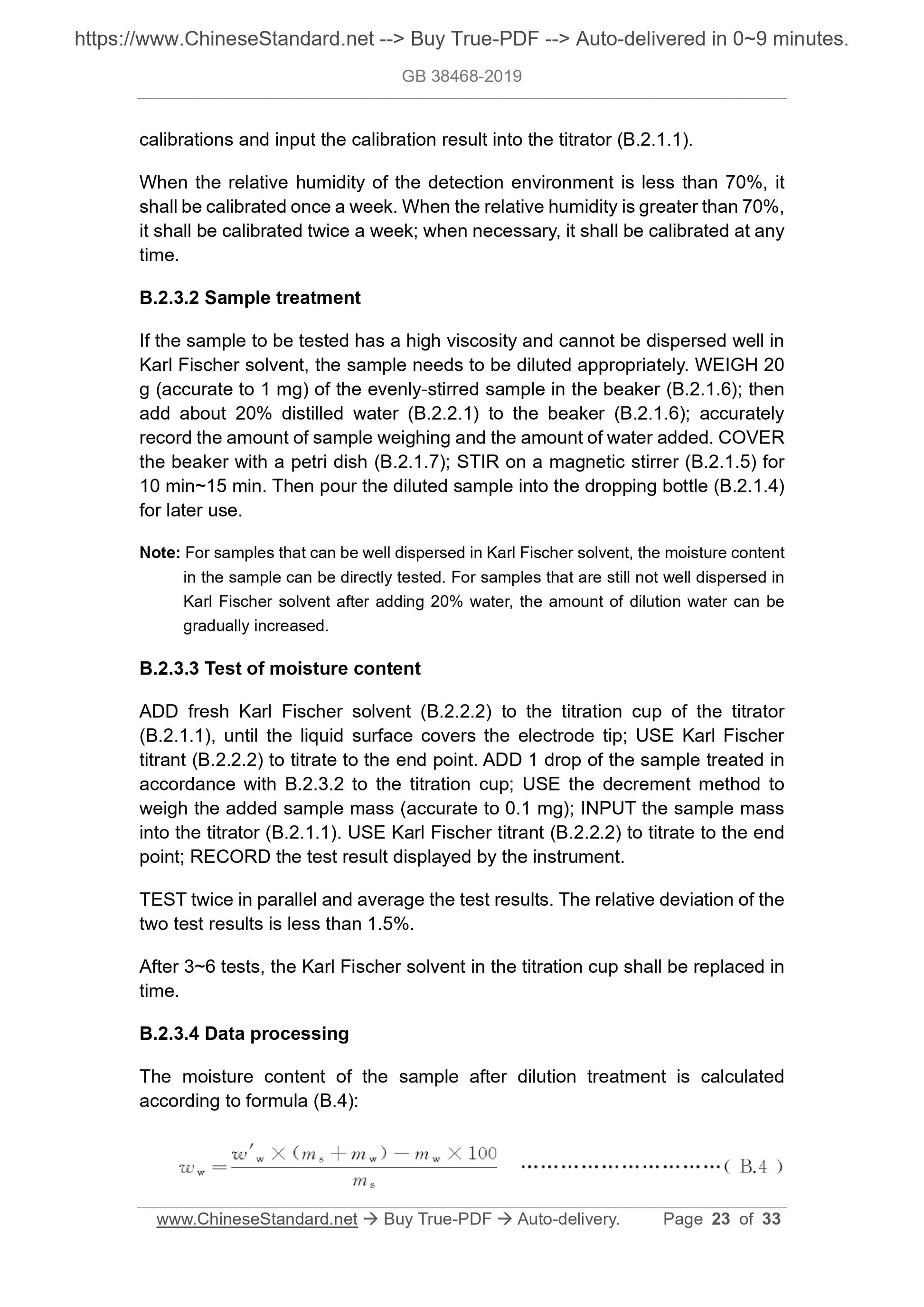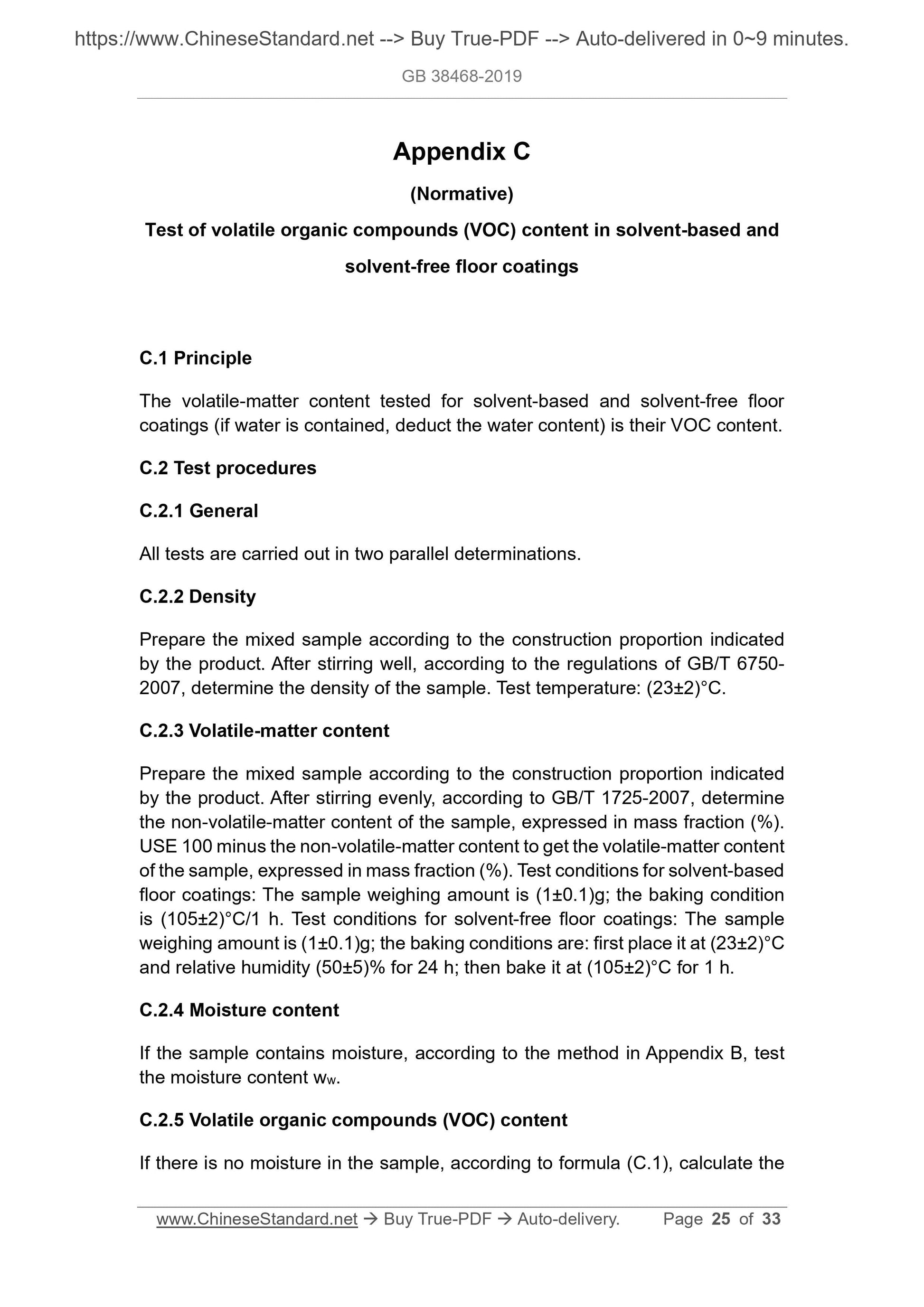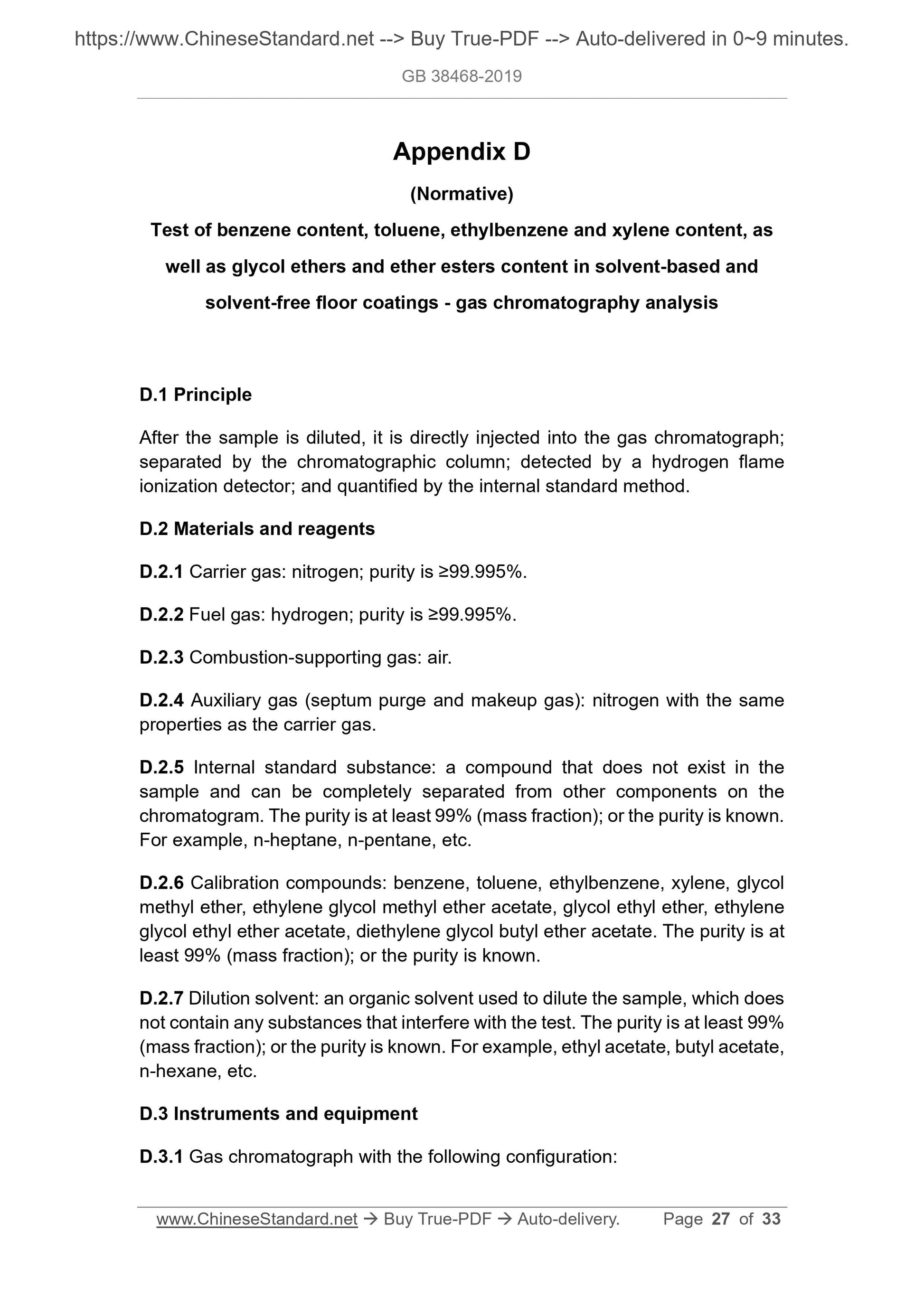1
/
of
12
www.ChineseStandard.us -- Field Test Asia Pte. Ltd.
GB 38468-2019 English PDF
GB 38468-2019 English PDF
Regular price
$265.00
Regular price
Sale price
$265.00
Unit price
/
per
Shipping calculated at checkout.
Couldn't load pickup availability
GB 38468-2019: Limit of harmful substances of interior floor coatings
Delivery: 9 seconds. Download (and Email) true-PDF + Invoice.Get Quotation: Click GB 38468-2019 (Self-service in 1-minute)
Newer / historical versions: GB 38468-2019
Preview True-PDF
Scope
This Standard specifies the terms and definitions, product classification,requirements, test methods, inspection rules and package marks etc. involved
in the allowable limits of substances harmful to humans and the environment in
interior floor coatings.
Note. Interior refers to the inside of places where the top is blocked or the top and the
surroundings are blocked, such as industrial plants, underground parking lots,
hospitals, schools, gymnasiums and other places. It is relative to places where the
top and the surroundings are not blocked.
This Standard applies to various interior floor coatings with organic polymers
as the main adhesives, which are painted on the base surface of floors such as
cement mortar, concrete, stone, plastic or steel, for decorating and protecting
the ground and other special functions (such as antistatic, corrosion resistance,
anti-skid, etc.); including primers, mid-coats, topcoats and finishes.
Basic Data
| Standard ID | GB 38468-2019 (GB38468-2019) |
| Description (Translated English) | Limit of harmful substances of interior floor coatings |
| Sector / Industry | National Standard |
| Classification of Chinese Standard | G51 |
| Classification of International Standard | 87.040 |
| Word Count Estimation | 20,242 |
| Date of Issue | 2019-12-31 |
| Date of Implementation | 2020-07-01 |
| Issuing agency(ies) | State Administration for Market Regulation, China National Standardization Administration |
Share
